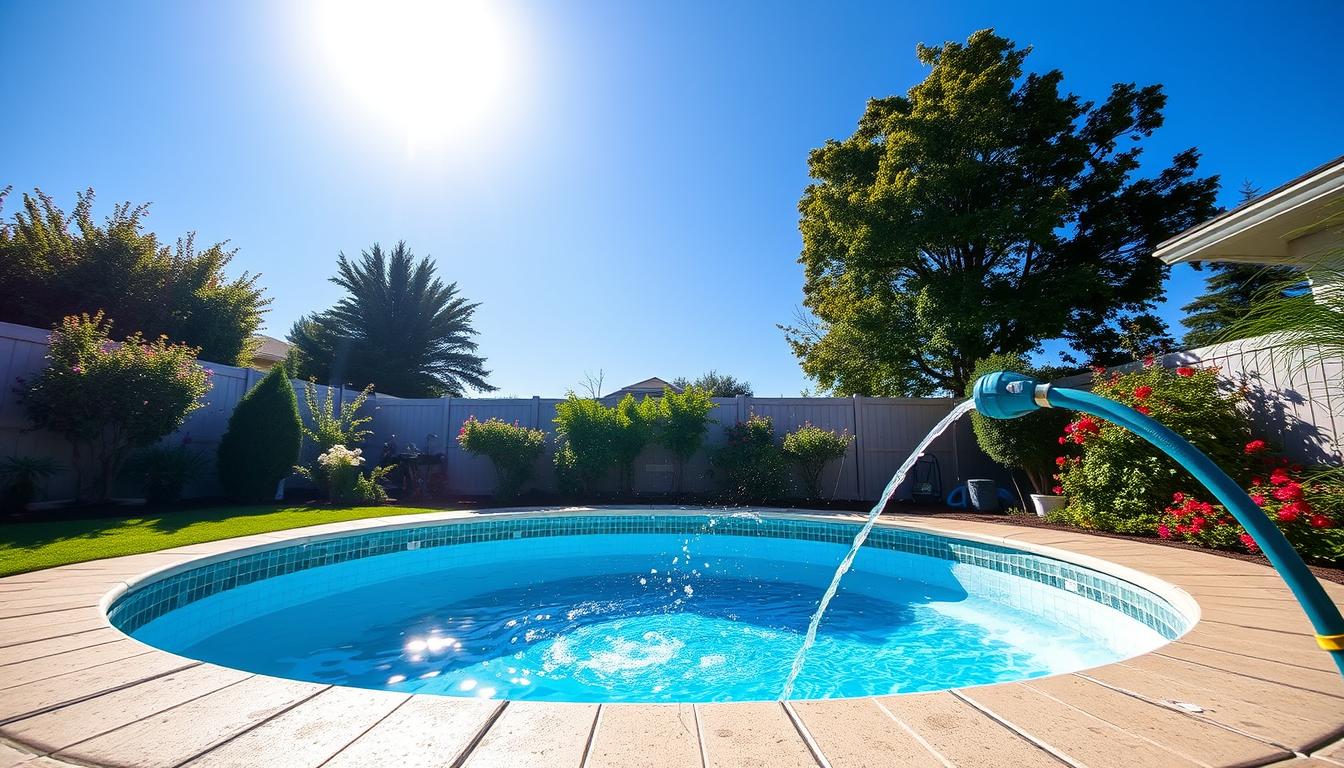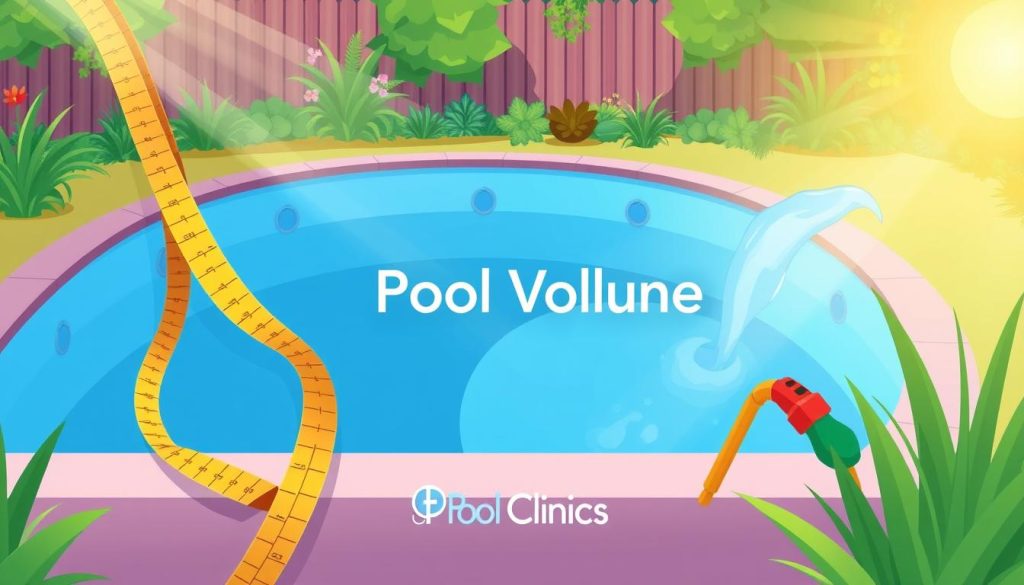
Summer’s here, and it’s time to jump into our backyard pools. Many pool owners wonder about filling time. This depends on pool size, water flow, and source capacity.
We’ll explore these factors to help you plan your summer fun. Understanding pool filling time lets you prepare for those refreshing dips.
Imagine your new pool waiting to be filled. You’re eager to swim, but first, it needs water. As you watch the hose trickle, you might wonder about the time.
Don’t worry, we’ve all been there. Knowing pool capacity and flow rates helps estimate filling time. This knowledge allows better planning for summer activities.
Key Takeaways
- The time it takes to fill a pool depends on its size, water source, and flow rate.
- A standard garden hose delivers approximately 24 liters per minute, or 1,440 liters per hour.
- Filling an Olympic-sized pool with a garden hose would take around 72 days.
- A private 80,000-liter pool would take about 22 hours to fill using a 60 L/min garden hose.
- Calculating your pool’s volume and water flow rate can help estimate filling duration.
Factors Affecting Pool Filling Time
Several factors determine how long it takes to fill a pool. These include pool size, water source, and hose capacity. Each plays a crucial role in the process.
Pool Size and Volume
Pool size greatly impacts filling time. Larger pools need more water and take longer to fill. An 18 ft. round pool needs about 7,646 gallons of water.
A smaller 12 ft. round pool requires only 2,827 gallons. To calculate your pool volume, use these formulas:
- Rectangular pools: Length × Width × Average Depth × 7.5
- Round pools: Diameter × Diameter × Average Depth × 5.9
- Oval pools: Length × Width × Average Depth × 6.7
Water Source and Flow Rate
Water source and flow rate impact filling duration. A fire hydrant fills faster than a garden hose. A river flowing at 5000 m³/s could fill an 80,000 L pool in 0.016 seconds.
A garden hose with 10-17 liters per minute flow takes much longer. Here’s a comparison of different water sources:
| Water Source | Flow Rate (GPM) | Time to Fill 10,000 Gallons |
|---|---|---|
| Garden Hose | 5-10 | 16-33 hours |
| Well Water (1 HP Pump) | 10-12 | 13-16 hours |
| Municipal Water Supply | 20-40 | 4-8 hours |
| Fire Hydrant | 500-1500 | 6-20 minutes |
Hose or Pump Capacity
Hose or pump capacity affects filling time. Garden hoses have lower flow rates than high-capacity pumps. Hose diameter and length impact water flow rate.
Larger diameters and shorter lengths provide better flow. Consider these facts:
A 5/8-inch diameter hose can deliver up to 17 gallons per minute, while a 3/4-inch diameter hose can provide up to 23 gallons per minute.
Pool pumps offer faster filling. They come in various sizes and capacities. A high-capacity pump can significantly reduce filling time compared to a garden hose.
Calculating Pool Filling Duration
Knowing how long it takes to fill a pool is key for good planning. We’ll explore pool volume calculations and water flow rates. These factors help determine accurate pool refilling times.

Formula for Estimating Fill Time
To find fill time, divide pool volume by water flow rate. Here’s the formula:
Fill Time (hours) = Pool Volume (gallons) ÷ Flow Rate (gallons per hour)
Let’s look at an example. Say we have a 20,000-gallon pool with a 600 gallons per hour water source.
Fill Time = 20,000 gallons ÷ 600 gallons per hour = 33.33 hours
Examples for Different Pool Sizes and Water Sources
Now, let’s see how fill times change with different pool sizes and water sources:
| Pool Size and Shape | Pool Volume (gallons) | Water Source | Flow Rate (gallons per hour) | Estimated Fill Time |
|---|---|---|---|---|
| 15′ Round Above Ground | 5,300 | Garden Hose | 600 | 8.83 hours |
| 18′ x 36′ Rectangular In-Ground | 19,440 | Well Water Pump | 1,200 | 16.20 hours |
| 12′ x 24′ Oval Above Ground | 8,640 | Water Delivery Service | 7,200 | 1.20 hours |
These examples show that bigger pools take longer to fill. Faster water sources like well pumps and delivery services cut fill time.
Knowing your pool’s volume and water source flow rate is crucial. It helps you plan and manage the refilling process efficiently.
Conclusion
Pool filling time depends on several key factors. These include pool size, water source, and pump capacity. Calculating volume and flow rate helps estimate filling time accurately.
Regular water testing prevents issues like staining and scaling. After resurfacing, careful attention is crucial for the first month. A certified pool service can protect your investment.
Understanding pool filling and maintenance ensures lasting enjoyment. Efficient practices save time and resources. They also enhance the value of your backyard oasis.







